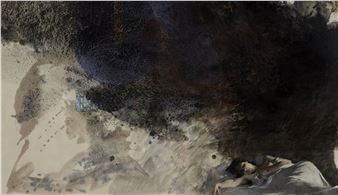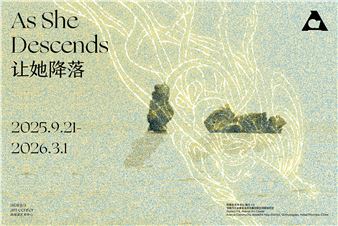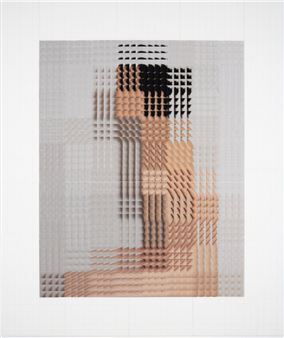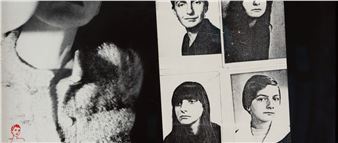Dexter Dalwood: Memoria en ruinas
British artist Dexter Dalwood presents a series of paintings inspired by his three years living in Mexico. Born in London, the painter moved to Mexico City following a fruitful residency in Oaxaca and his 2021 solo exhibition at the Museo Nacional de Arte (MUNAL), Esto no me pertenece (This DoesnвҖҷt Belong to Me).
For his first solo exhibition with Galerie Nordenhake, Memoria en ruinas, the artist, true to his style, fills the gallery with moments, scenes, and speculative landscapes. One example is the comet that Montezuma is said to have watched from the roof of his palace, perhaps the same one Velasco painted four centuries later. Dalwood reimagines the event, exploring how memories shift between the precise dates of historical events and the evolving narratives that surround them over time.
In several of his works, Dalwood begins from anecdotes. Archaeology of Indifference and Andy in Mexico are examples of this process. Andy Warhol visited TeotihuacГЎn, without stepping out of the car. His biographer Bob Colacello recounts in The Atlantic that Warhol refused to get out, uninterested in what he described as вҖңa pile of rocks.вҖқ In contrast, during his visit to the Basilica of Guadalupe, Colacello describes his surprise at WarholвҖҷs devotion as he joined in the religious rituals.
DalwoodвҖҷs paintings are full of these connections: historical and social moments intertwined with direct references to art history. In Tlatelolco, we encounter the iconic scoreboard of the Estadio OlГӯmpico Universitario, used during the 1968 Mexico City Olympics. In this version, the screen no longer shows competition results but instead the name of this area of the city, which, since October 2, 1968, has become synonymous with the repression of student protests. In the background appears a reference to the work of American painter Morris Louis, a leading figure of Color Field Painting, whose influence still resonates today.
Described in this way, DalwoodвҖҷs work might seem like a network of references that only reveals itself as each one is identified. вҖңHereвҖҷs Morris Louis.вҖқ вҖңThis must be a nod to Warhol.вҖқ вҖңThis recalls the composition of a forgotten piece by Velasco.вҖқ All of these readings are valid, but incomplete. The artistвҖҷs intention is lost if we approach his work only through this lens of reference and recognition.
Dalwood invites the viewer to use the elements within each painting to speculate and form new connections, completing the blank space that hovers around every work. At the same time, he draws attention to painting itself, to its materiality, plasticity, and autonomy, which, far from being a faithful copy of an image, brings us closer to painting as an object.
In Inventory of a Landscape, this process becomes clear. Reading each word triggers a mental image. It is through this act of imagining and constructing that the visual experience truly unfolds. Just as Bernal DГӯaz del Castillo, in The True History of The Conquest of New Spain, or Alexander von Humboldt, in his naturalist studies, created new representations of the world, Dalwood reminds us that looking also means interpreting and constructing new memories.
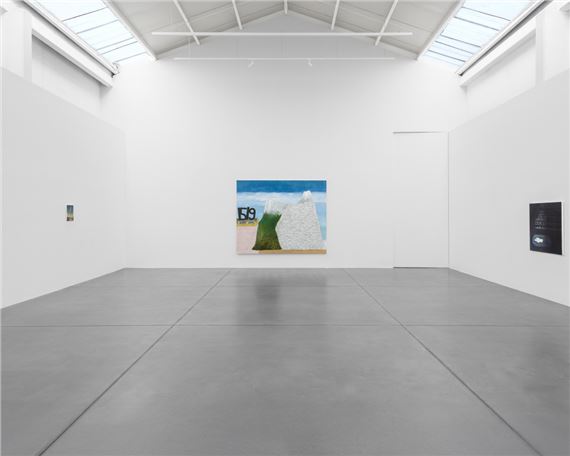
Recommended for you
British artist Dexter Dalwood presents a series of paintings inspired by his three years living in Mexico. Born in London, the painter moved to Mexico City following a fruitful residency in Oaxaca and his 2021 solo exhibition at the Museo Nacional de Arte (MUNAL), Esto no me pertenece (This DoesnвҖҷt Belong to Me).
For his first solo exhibition with Galerie Nordenhake, Memoria en ruinas, the artist, true to his style, fills the gallery with moments, scenes, and speculative landscapes. One example is the comet that Montezuma is said to have watched from the roof of his palace, perhaps the same one Velasco painted four centuries later. Dalwood reimagines the event, exploring how memories shift between the precise dates of historical events and the evolving narratives that surround them over time.
In several of his works, Dalwood begins from anecdotes. Archaeology of Indifference and Andy in Mexico are examples of this process. Andy Warhol visited TeotihuacГЎn, without stepping out of the car. His biographer Bob Colacello recounts in The Atlantic that Warhol refused to get out, uninterested in what he described as вҖңa pile of rocks.вҖқ In contrast, during his visit to the Basilica of Guadalupe, Colacello describes his surprise at WarholвҖҷs devotion as he joined in the religious rituals.
DalwoodвҖҷs paintings are full of these connections: historical and social moments intertwined with direct references to art history. In Tlatelolco, we encounter the iconic scoreboard of the Estadio OlГӯmpico Universitario, used during the 1968 Mexico City Olympics. In this version, the screen no longer shows competition results but instead the name of this area of the city, which, since October 2, 1968, has become synonymous with the repression of student protests. In the background appears a reference to the work of American painter Morris Louis, a leading figure of Color Field Painting, whose influence still resonates today.
Described in this way, DalwoodвҖҷs work might seem like a network of references that only reveals itself as each one is identified. вҖңHereвҖҷs Morris Louis.вҖқ вҖңThis must be a nod to Warhol.вҖқ вҖңThis recalls the composition of a forgotten piece by Velasco.вҖқ All of these readings are valid, but incomplete. The artistвҖҷs intention is lost if we approach his work only through this lens of reference and recognition.
Dalwood invites the viewer to use the elements within each painting to speculate and form new connections, completing the blank space that hovers around every work. At the same time, he draws attention to painting itself, to its materiality, plasticity, and autonomy, which, far from being a faithful copy of an image, brings us closer to painting as an object.
In Inventory of a Landscape, this process becomes clear. Reading each word triggers a mental image. It is through this act of imagining and constructing that the visual experience truly unfolds. Just as Bernal DГӯaz del Castillo, in The True History of The Conquest of New Spain, or Alexander von Humboldt, in his naturalist studies, created new representations of the world, Dalwood reminds us that looking also means interpreting and constructing new memories.
Artists on show
Contact details


 ARTISTS
ARTISTS








